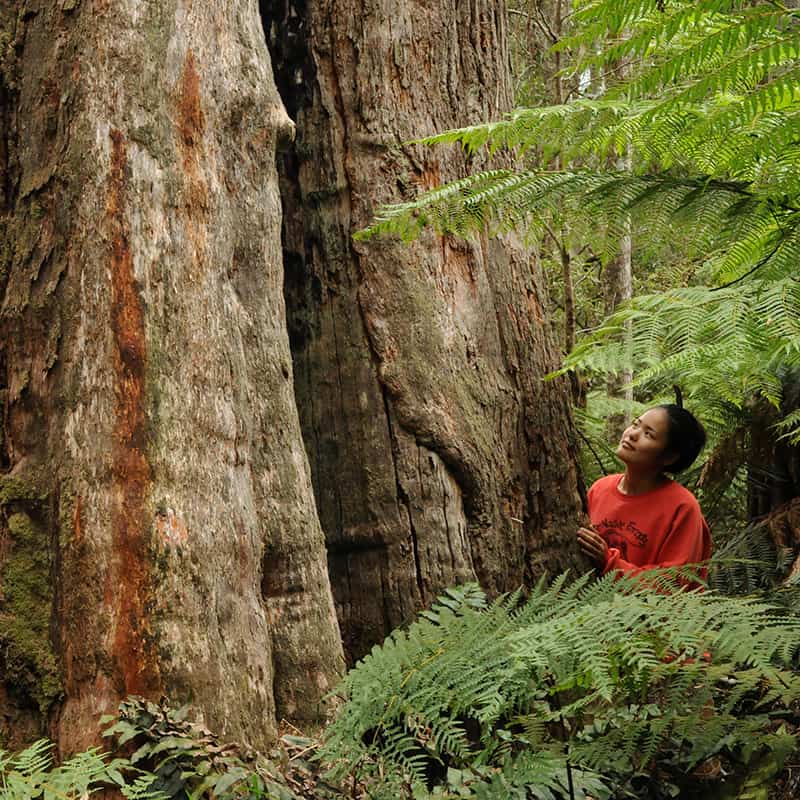East Gippsland’s forests support some of Victoria’s finest remaining high-conservation forest. They’re a stronghold for many rare and threatened plants and animals, once common across the state.
East Gippsland’s forests are of world significance. English botanist David Bellamy described them as ‘the most diverse range of temperate forest ecosystems on Earth’.
They’re filled with rainforests, pristine rivers, waterfalls, rare plants and animals. They’re the last stronghold for threatened and endangered wildlife like large forest owls, Greater Gliders, Spotted-tailed Quolls and Long-footed Potoroos.
As the climate changes, these old-growth forests will also play increasingly important roles as carbon sinks and habitat sanctuaries for many of our threatened plants and animals. The best way to protect these forests is by giving them national park status.
Numerous reports over the years have identified unique and biodiversity rich values of East Gippsland forest.
Many Victorian species rely on forests for all or part of their life cycle, including at least 37 frog species, 117 reptiles, 272 birds, 87 mammals and 2853 vascular plants. More than a quarter of forest vertebrate animal species and about 10 per cent of plants are considered extinct or threatened.

An independent assessment by the Victorian Environment Assessment Council (VEAC) found that ‘Large areas of East Gippsland are in the highest categories in terms of contribution to forest biodiversity conservation with particularly high contribution patches between Bairnsdale and Orbost, around Bendoc, and east of Cann River’.
Despite their high biodiversity values and extensive damage caused by historic over-logging and frequent fires, Victoria’s native forests continue to be commercially logged, including by clear-felling, and are also exploited for firewood.
The VEAC assessment found that of the 79 forest-dependent species, 12 are listed under Victoria’s threatened species laws. Timber harvesting is a recognised as a threat to all but one of the 12.
The Victorian government, and now the state-owned logging agency VicForests, has logged many thousands of hectares of high-conservation-value forest, including prime old growth, mature forest and rainforest since clearfelling started in the early 70s. The small patches that remain are extremely valuable.
East Gippsland could be the eco-tourism centre for old-growth, wildlife and wild-forest tourism.
Impacts of logging
Logging of forests in East Gippsland:
- dries out and destroys or damages rainforests by removing important buffers
- kills our native animals and destroys or modifies their habitats
- causes siltation of streams
- converts biodiverse forests into intensively managed, species sparse commercial regrowth
- opens up and dries out forests, increasing their susceptibility to fire
- accelerates the spread of feral animals and weeds
- reduces the quality and quantity of water produced by forests
- makes a major contribution to global warming – large volumes of carbon dioxide are released throughout Victoria each year due to regeneration burns.
The burns that follow clear-felling eliminate fire-sensitive and rainforest species. Clear-felling essentially transforms diverse natural forests into tree farms. It becomes a commercial crop, not a natural forest.
While logging remains a major concern, East Gippsland forests are also impacted on by too-frequent fire or poorly managed planned burning. Feral species such as deer, foxes and various weeds are also a significant threat.
VNPA works with a range of regional groups in East Gippsland including Environment East Gippsland.